Deep Tunnel Sewerage System: A used-water highway 3 decades in the making
Sign up now: Get ST's newsletters delivered to your inbox
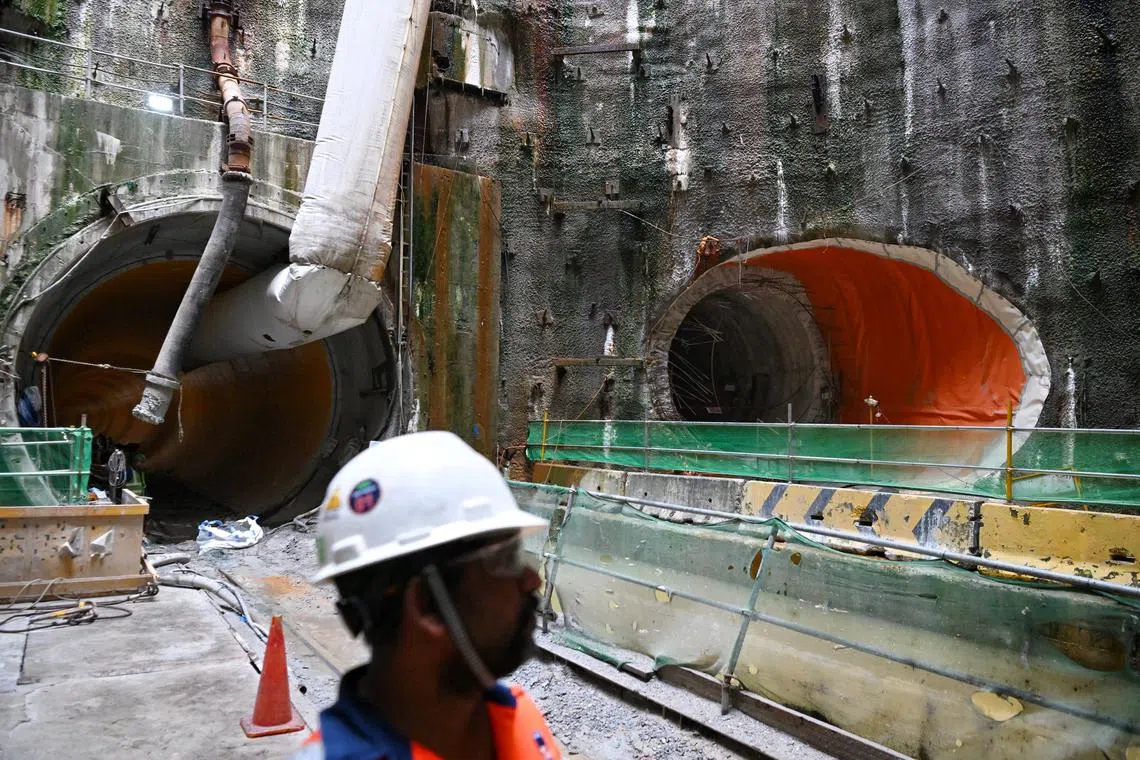
The DTSS is designed to last 100 years, with a lower risk of contamination due to pipe damage.
ST PHOTO: KUA CHEE SIONG
Follow topic:
SINGAPORE – Work is almost complete on the 206km-long Deep Tunnel Sewerage System (DTSS) conceived in the 1990s, with tunnelling works done for its second phase
The Straits Times gives updates on the nearly $10 billion mega projec
The 1890s and early 1900s
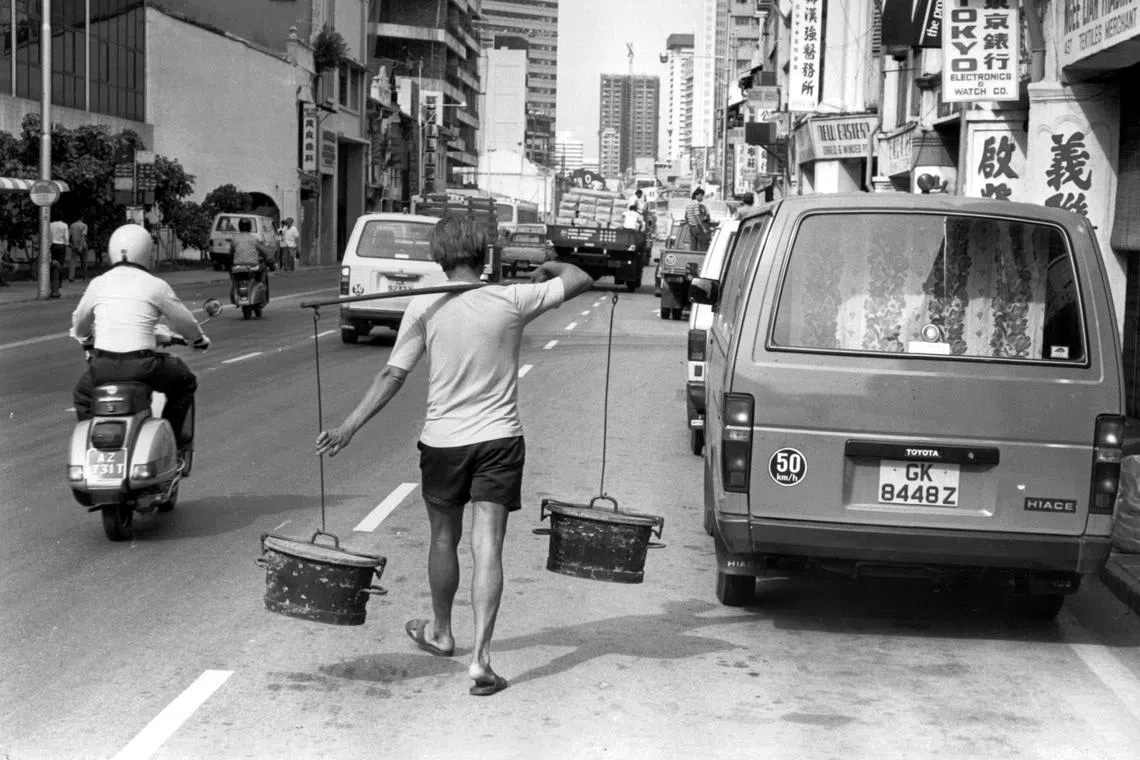
A night soil bucket collector.
PHOTO: ST FILE
Residents use outdoor latrines and rely on night soil bucket collectors to clear waste.
The 1910s: First water-borne sanitation system
Treatment plant is built in Alexandra Road and treated used water is discharged into the Singapore River.
Alexandra Sewage Disposal Works struggles to cope with the rapidly growing population’s sewage disposal needs.
1948: Singapore’s first water reclamation plant
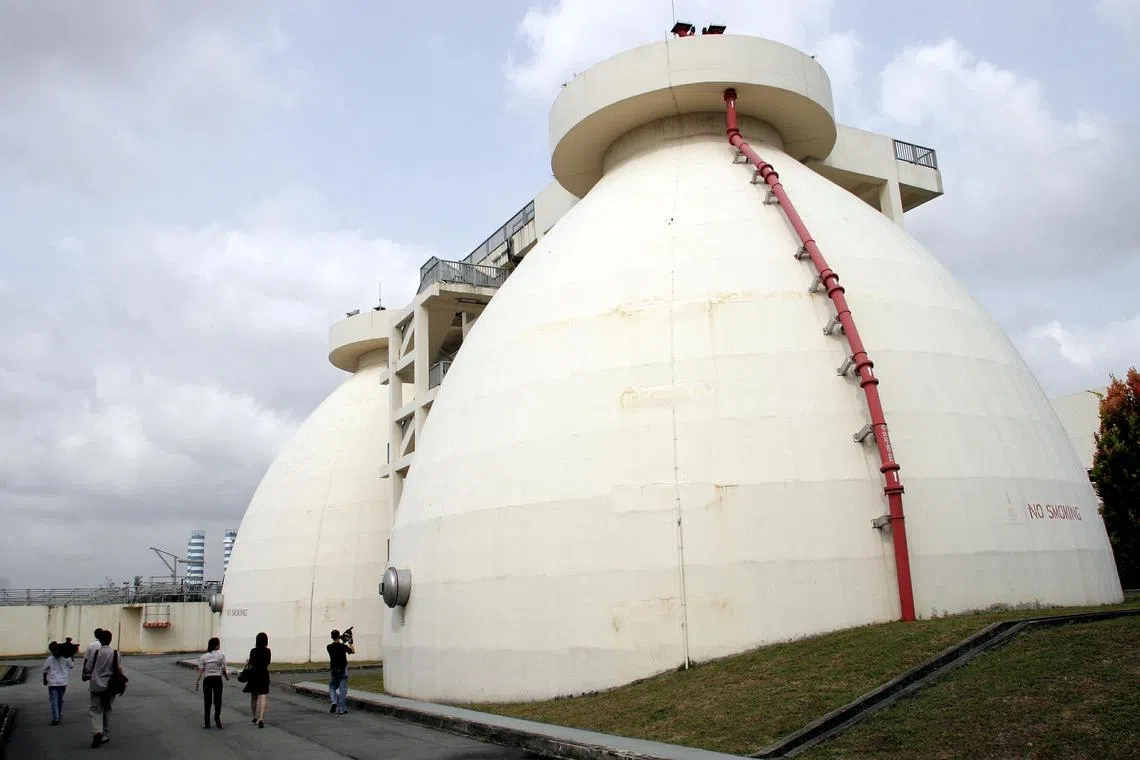
The Kim Chuan Water Reclamation plant, which has since been demolished.
PHOTO: ST FILE
The Kim Chuan Sewage Treatment Works is built in the east, away from the congested city centre.
Late 1960s: Sewerage Master Plan
The Sewerage Master Plan is formed, dividing Singapore into six sewage catchment zones.
Within each zone, pumping stations channel sewage to a centralised treatment plant. Sewage is treated according to international standards before it is discharged into the sea.
The 1980s: Phase-out of night soil bucket system

Singapore’s last night soil bucket reached the end of the road. The last bucket was carried to the Lorong Halus Nightsoil Disposal Station, off Tampines Road.
PHOTO: ST FILE
By 1984, nearly 90 per cent of Singapore is benefiting from the modern sanitation system.
Night soil collection centres are closed and over 15,000 buckets disposed of.
1979 to 1985: Building on the masterplan

The Ulu Pandan Water Reclamation Plant, showing the covered primary clarifiers, covered aeration tanks and the covered final clarifiers, which reduce the odour buffer zone around the plant.
PHOTO: ST FILE
Six water reclamation plants are built under the plan, in Kim Chuan, Ulu Pandan, Bedok, Seletar, Kranji and Jurong.
These plants require numerous pumping stations islandwide and take up large areas of space, placing constraints on other developments.
1995: DTSS is conceived
The Deep Tunnel Sewerage System – an underground superhighway for used water – is conceived as Singapore’s sewerage system for the 21st century.
1997: Whole of Singapore’s population has modern sanitation
The Government commissions a feasibility study for the DTSS.
1999: DTSS Phase 1 construction begins
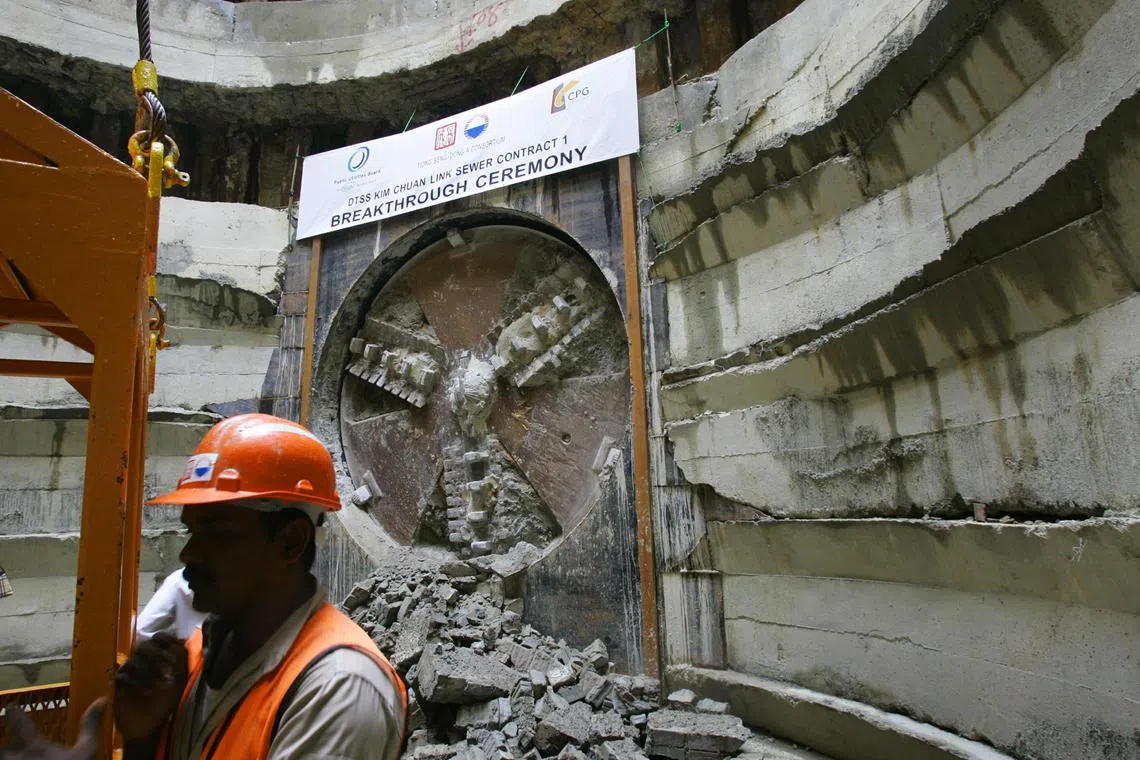
Known as the Kim Chuan Link Sewer, it will carry sewage from an area stretching from Paya Lebar to Marina South to the deep-tunnel system.
PHOTO: ST FILE
2008: DTSS Phase 1 completed
Used water is treated at the Changi Water Reclamation Plant before being purified into Newater or discharged into the sea.
2019: Tunnelling works for Phase 2 begin

A tunnel boring machine used on the Phase 2 tunnelling works.
PHOTO: LIANHE ZAOBAO FILE
2023: Tunnelling works for Phase 2 completed
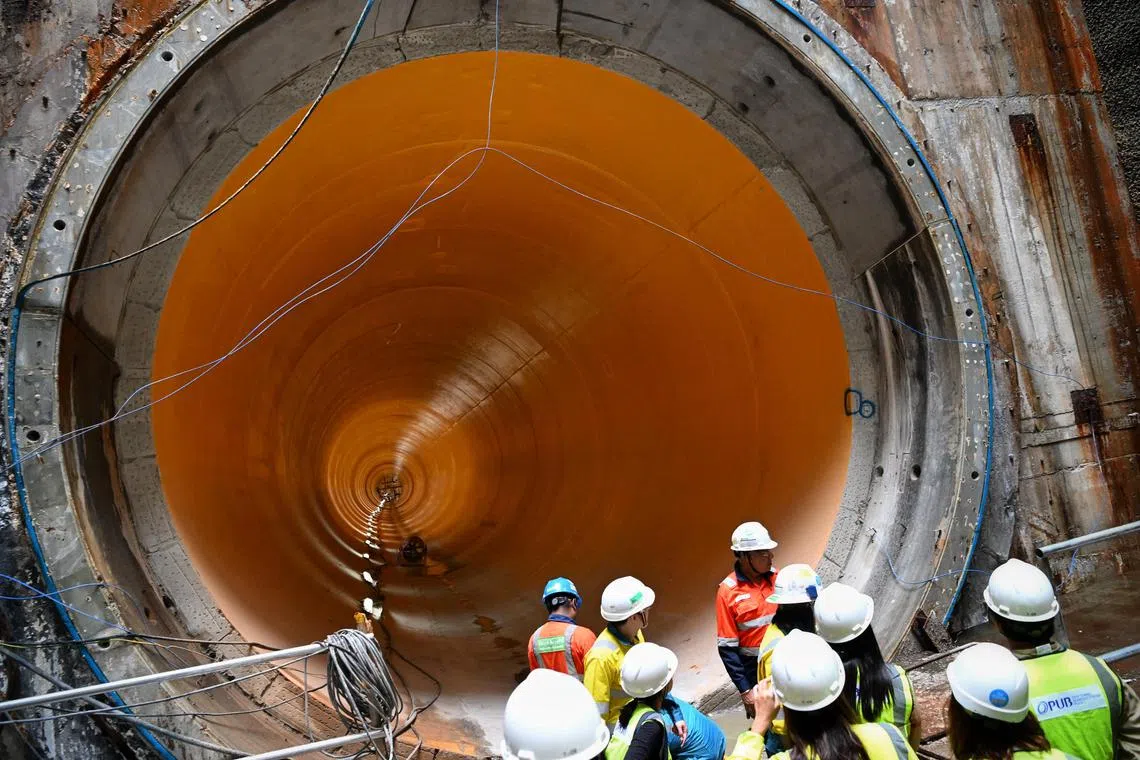
The media gets a tour of the completed Deep Tunnel Sewerage System Phase 2 tunnelling works at the tunnelling site in Penjuru Road on Aug 17, 2023.
ST PHOTO: KUA CHEE SIONG
35km-long tunnels will channel used water to the upcoming Tuas Water Reclamation Plant.
2026: DTSS Phase 2 and Tuas Water Reclamation Plant to be completed
All of Singapore’s domestic and industrial used water will travel underground.
The DTSS is designed to last 100 years, with a lower risk of contamination due to pipe damage.

Source: PUB, NLB eResources, Remember Singapore


